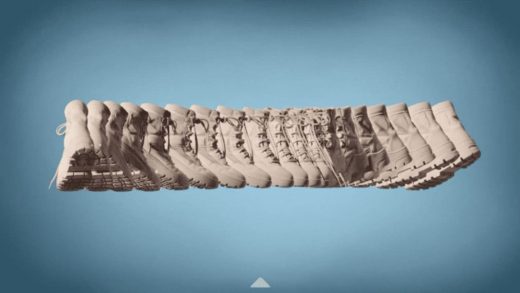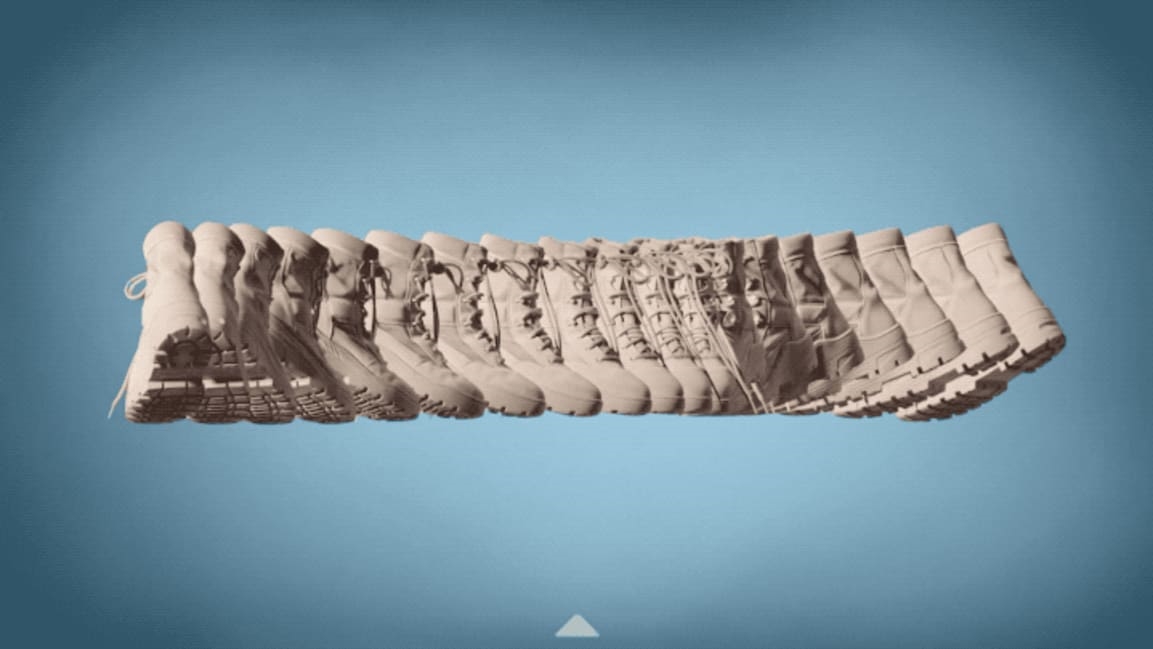First look: Kanye West’s new website turns shopping into art
Kanye West will soon unveil the newest iteration of Yeezy Supply, the website that features his collection of shoes, clothes, and accessories. When it debuts, you can expect a shopping experience unlike anything you’ve seen on the internet.
You’ll be able to pick an outfit, then put it on a 3D model who walks across the screen. And if you want to know more about that model, you can click to get a few background details, like her favorite food, or a significant life experience she has had. There are no words on the screen. The overall aesthetic is as if a video game were set in a medical supply store. In a good way.
“We were trying to make the internet a more humane place,” explains Nick Knight, West’s creative partner on designing the website, in an interview with Fast Company. “We’ve gotten used to the internet being a flat, two-dimensional place. But the internet is also this amazing tool that connects everybody in the world: What if we could use it to get to know the people we are looking at on the screen?”
Knight, who is a well-known fashion photographer and filmmaker, created a short film that documents the entire three-year-long journey the pair went on to create the new site. Part of their process was completely counterintuitive: They came up with a list of things they didn’t like and that weren’t considered to be “good taste,” then used that as a foundation for an online shopping experience.
For instance, the pair dug through some of the most low-fi, functional e-commerce sites on the internet. On the website for an off-brand medical supply company, West became fixated with an image of three scrubs next to a mannequin on a blue background (West famously hates the color blue). This became the inspiration for early iterations of the Yeezy Supply website. “He had had enough of working with things that he loved and wanted to try a different way of creating,” Knight says in the film.
It’s classic contrarian Kanye. But it’s also where online shopping is headed. Most shopping sites are generic. From Barney’s to Staples, brands use the same infrastructure that first became popular in the ’90s, forcing consumers to scroll through rows of products and filter items using navigation tools. Companies have tried to stand out through punchy graphics and bright color palettes, but there hasn’t been much structural innovation, beyond a few experiments here and there. Yeezy Supply is the latest thought experiment to ask what happens when you break all the rules about what constitutes a functional, well-designed website.
West and Knight also tried ideas that were a little goofy. At one point they created a site where if the customer did not shop fast enough, a bikini-clad model would walk across the screen and scrub off the entire site. The model hasn’t made it into the final version of the Yeezy Supply website, but she did inspire the pair to think creatively about the idea of space on the internet. “It showed depth behind the screen,” Knight says in the video.
Ultimately, the idea helped inspire one of the most crucial aspects of the new site. Instead of using flat photographs of models, Yeezy Supply will have 3D images of models that look like video game avatars. There will be a selection of models of different body types. Then, customers will be able to put garments from the Yeezy collection on the model of their choice. West picked models that have compelling stories and have done important things for their communities. There are nurses, firefighters, and public school teachers. Snippets of these narratives are available for the customer to explore.
Does the site ask too much of visitors? Will they be so distracted, they forget to buy anything? Maybe. But ultimately, West and Knight aspired to make more than a website: They wanted to turn shopping into a form of art. “Humans have created art in every medium we have encountered, but we have yet to see an art form emerge from the internet,” Knight asks. “Why shouldn’t the great art of the internet emerge from an e-commerce website?”
Fast Company , Read Full Story
(24)



